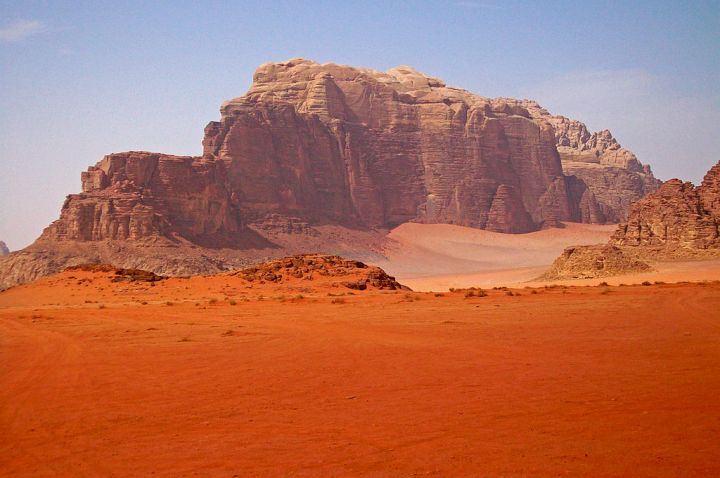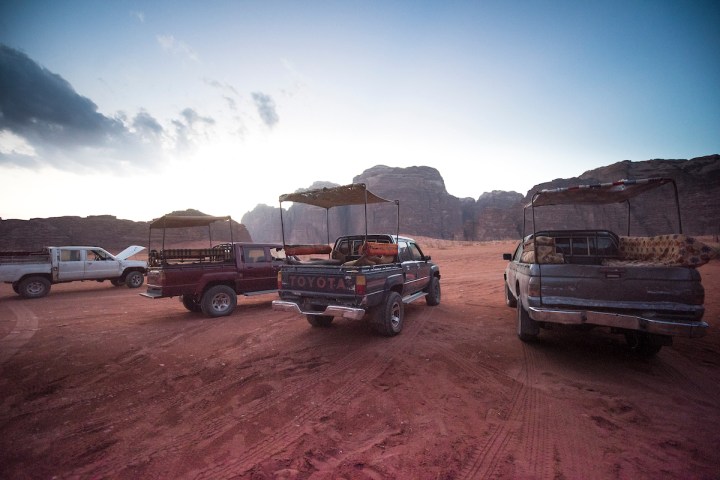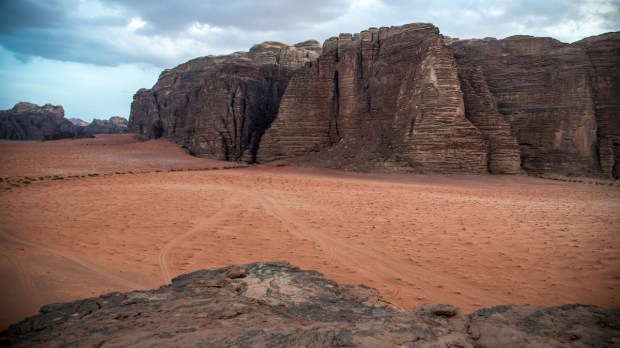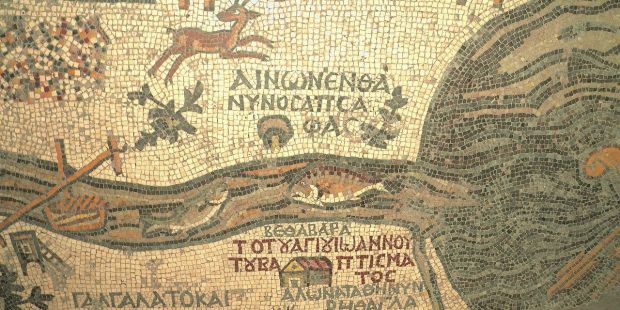Maybe you remember Rogue One: A Star Wars Story, the first of the Star Wars standalone films, released in 2016. One of the key settings of the movie, the moon-planet of Jedha, was home to one of the first civilizations to explore the nature of the Force, the spiritual Mecca of the Jedi Order. You might be surprised to know that this otherworldly landscape was not the product of computer animation. It is a real location, mentioned in the Bible, that was home to Christian monks and hermits in Late Antiquity and even during the early Middle Ages. In fact, the tradition of the Egyptian Desert Fathers extended all the way to this region, the Jordanian Wadi Rum.
Some Bible scholars claim the Wadi Rum is referred to as Aram or Iram in the book of Genesis. Some others affirm it is the land of Uz we find in the book of Job. Others think this is rather part of the land of Midian, where Moses fled after killing an Egyptian, as told in Exodus 2, 11. All of these references explain why and how the Wadi Rum had a significant historical connection to various biblical events, and later on became a hub of Christian monasticism.

Moses is a constant presence in Jordan, just like Elijah, John the Baptist, and Jesus are. But whereas the latter three (for reasons those who are acquainted with the Bible will immediately understand) are more related to the Jordan river and its surroundings, Moses is a central presence both on the Jordanian shores of the Red Sea and in the Wadi Rum desert, further east. Of course, what neither Moses nor Aaron nor any other legendary pilgrim ever dreamed of doing was riding in a jeep across this magnificent wadi at sunset, discovering ancient petroglyphs dating back more than 10.000 years. Now, every visitor can do it, riding in the back of a jeep driven by locals, who might even take the tourist/pilgrim for tea or coffee in a Bedouin tent—not to mention the many glamping options available.
Before the days of the Rashidun Caliphate (the first of the four major caliphates established after the death of Muhammad), the Wadi Rum desert belonged first to the Nabatean kingdom, then to the Roman empire and, finally, to the Byzantines. It was during this last period when, apparently, it got its current name: the inhabitants of the desert (mainly Bedouin tribes who either worshiped Roman gods or had become Christians) would refer to the Christian monastic and ascetic communities established in the region as “Rum,” that is, “Romans,” a word that would apply to Eastern Romans (that is, Byzantines) and Greek alike.

The desert, however, is also known as the “Valley of the Moon,” the Wadi Al-Qamar, and for good reason. Contemplating the stars (and the Milky Way) while drinking tea in this magnificent desert in the middle of the night, enjoying the proverbial hospitality of the Bedouins, certainly makes one remember the promise God made to Abraham: “I will multiply your descendants beyond number, like the stars in the sky and the sand on the seashore.”
Currently, there is no monastic life in the Wadi Rum, either Catholic or Orthodox. But there is indeed a Christian presence all throughout the country, which keeps a 2,000-year-old tradition very much alive. And even if monks have not lived in either the desert or the surrounding hillsides for centuries, one can still see, visit and even enter and rest in the caves where they once did, as they are nowadays mostly being used by shepherds while their herds graze around.
Make sure to visit the slideshow below to discover ten other great touristic and pilgrimage destinations in Jordan.
This content has been brought to you in partnership with the Jordan Tourism Board.



